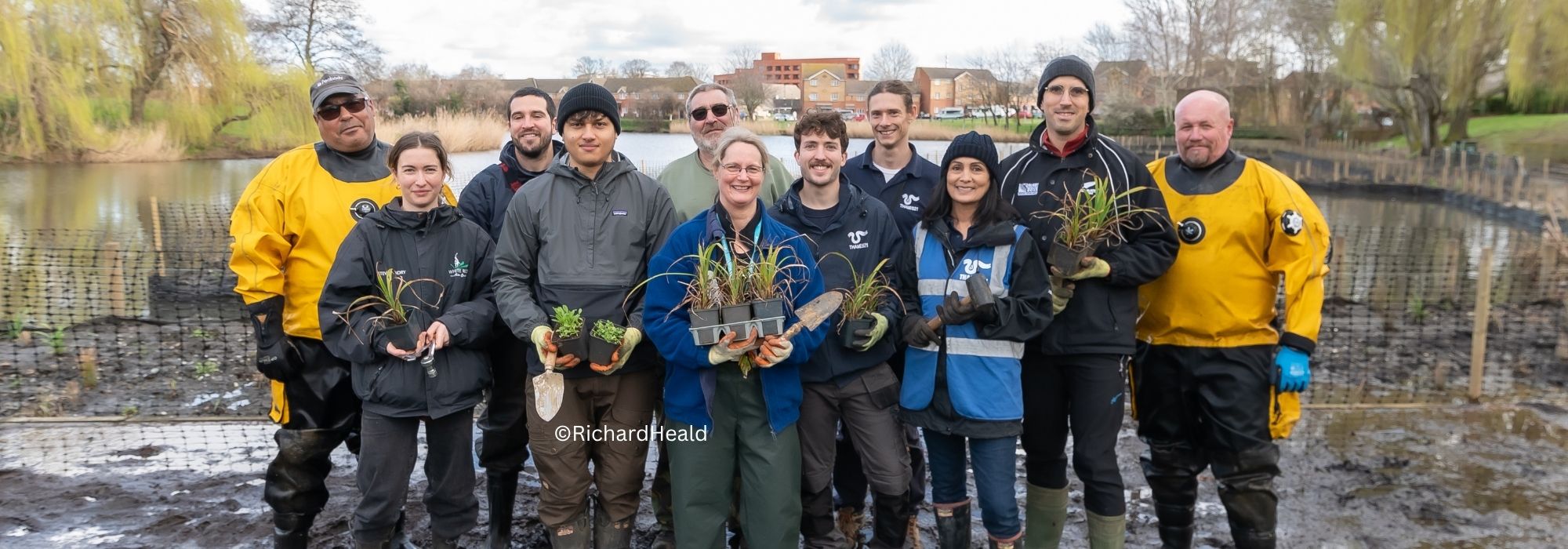Restoring urban waterways: Floating treatment wetlands help to enhance water quality in south-east London
Here, Thames21’s Lucy Hutchison highlights the results of Thames21’s collaborative SYMBIOREM Gallions Lake project.
Introduction to the project
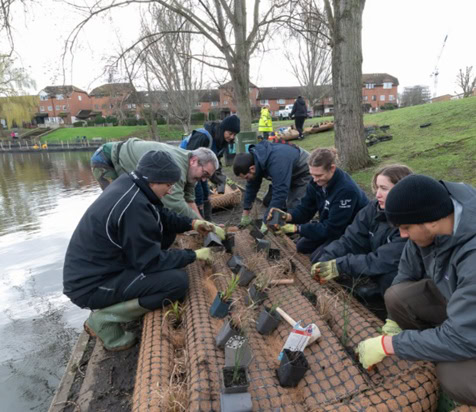
In February 2024, Thames21, along local volunteers, ecological engineering company Biomatrix Water and housing association Peabody installed two Floating Treatment Wetlands (FTWs) within a three-cell constructed wetland system in Gallions Lake, which is based at Thamesmead, south-east London.
These floating islands are designed like sponges. When water flows through them, they absorb any heavy metals that originate from road run-off pollution before entering the lake. In fact, these wetlands have specific native wetland vegetation planted within them, which can act like filters and improve water quality. They also boost biodiversity and provide the community with a natural space for engagement and recreation.
What was the experiment?
This work was part of the project SYMBIOREM – an EU project which aims to develop sustainable environmental treatment technologies. Through this, an experiment was conducted by Thames21 to assess how well the FTWs could remove heavy metals such as zinc (Zn) and copper (Cu), pollutants commonly associated with road run-off.
Thames21 monitored the water quality and two common wetland species of sedge over six months (March to August 2025) – Carex acutiformis and Carex pendula. Each month, water and plant samples were collected and analysed in a lab at Queen Mary University of London to evaluate metal concentrations in roots, leaves and surrounding water.
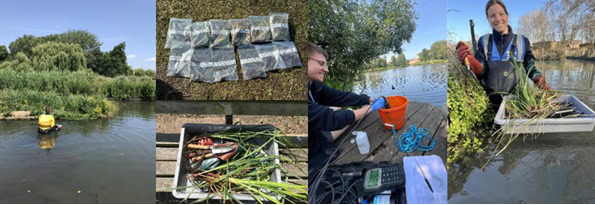
How did the wetlands perform?
Following analysis of the data, the following trends were seen:
- An improvement in water quality as it moves through the wetland. Trends suggest an increase in dissolved oxygen content (important for the fish in the lake) and reduction of nutrient load within the water. This is supported by readings of an 110% increase in dissolved oxygen content and 80% reduction in phosphate levels.
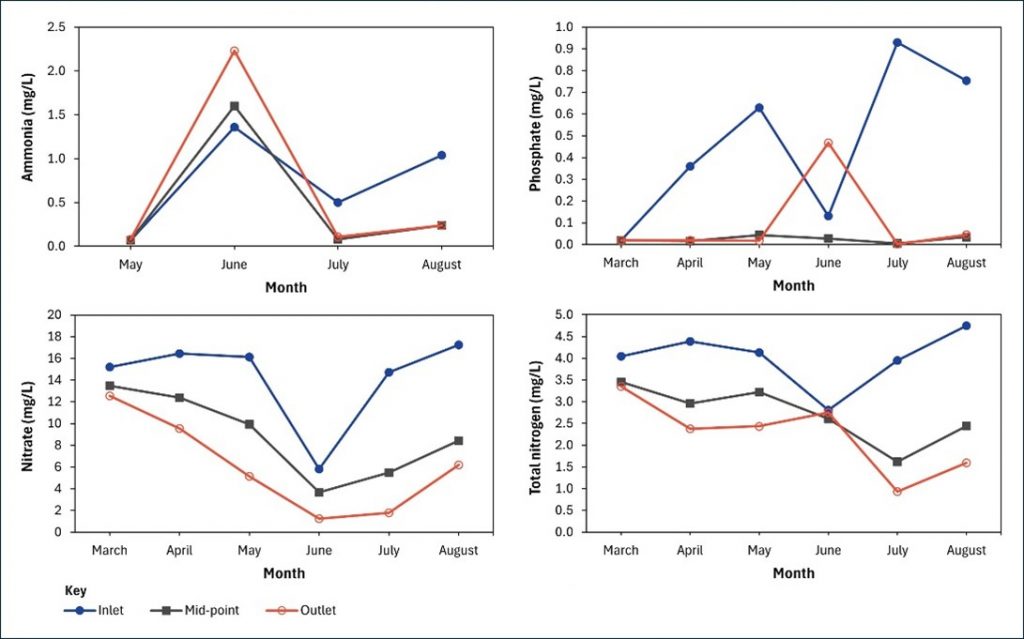
- Zinc and copper concentrations were highest at the outfall where road run-off pollution enters the wetland and lowest at the end of the wetland, with zinc reduced by 66% and copper reduced by 43%, showing that the system could be trapping and removing these pollutants.
- Both species of sedge accumulated metals, especially in their roots, suggesting that these plants may play a crucial role in improving water quality.
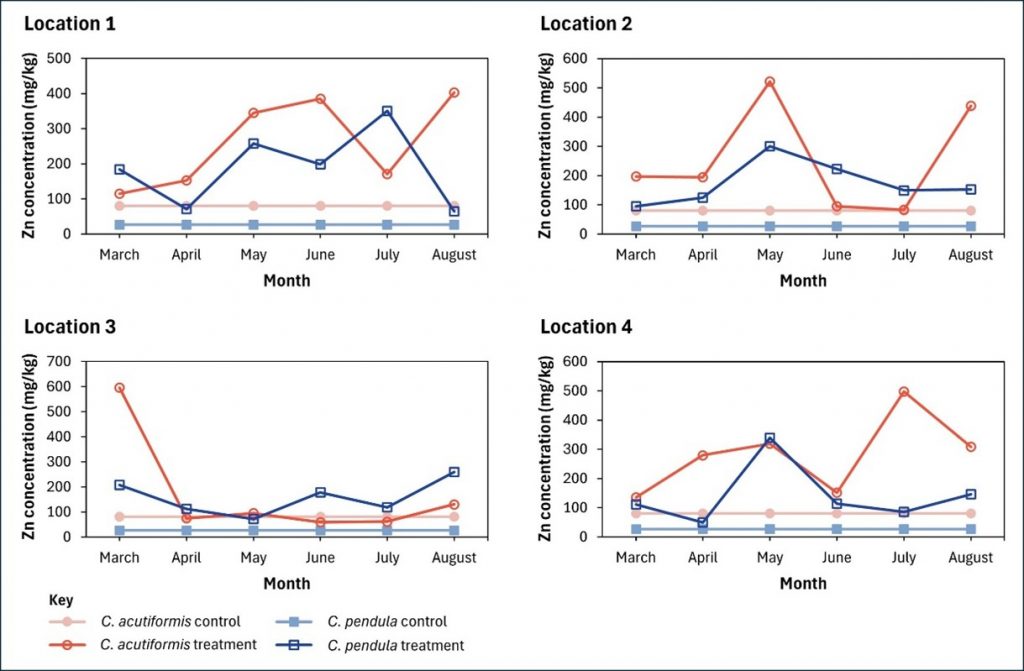
- There were seasonal peaks in uptake of heavy metals and nutrients during the plant growing season. Metals were also mostly stored in the roots and were not transferred to the leaves. This helps to inform future management of the FTWs, such as when and where to harvest the plants.
Validation of citizen science reliability
Local citizen scientists monitor water quality monthly at different locations around the Marsh Dykes and Thamesmead catchment, including at the inlet and outlet of this wetland system in Gallions Lake. Their handheld testing kits for monitoring phosphate and ammonia was tested at the same time as samples were collected for analysis in the lab. The data from the citizen science method was found to closely match lab results, confirming that community monitoring can produce reliable insights while connecting local people with the health of their waterways.
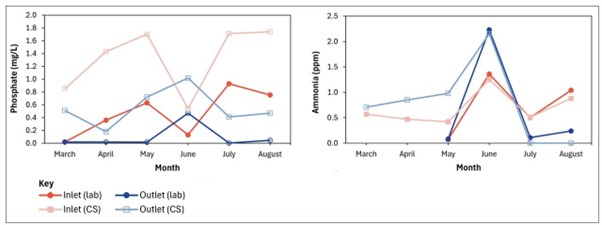
What does it mean?
This study suggests that floating treatment wetlands can play a vital role in improving urban water quality, helping to tackle pollution from urban runoff. As well as improving water quality, they also enhance biodiversity, support aquatic life through better oxygenation and create long-term environmental stewardship
The findings of this experiment at Gallions Lake strengthens the case for scaling up these nature-based systems across London and other urban areas, especially in light of the climate emergency, demonstrating that natural solutions can deliver real, measurable improvements for our environment.
Top image attribution – ©RichardHeald
